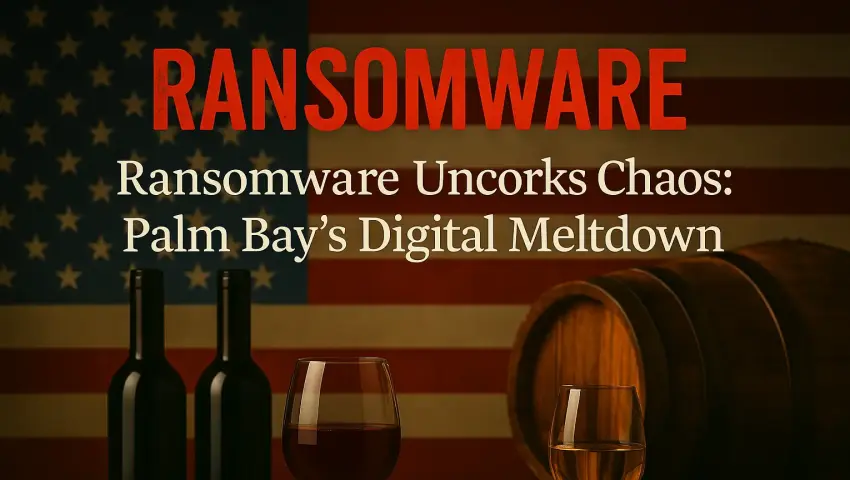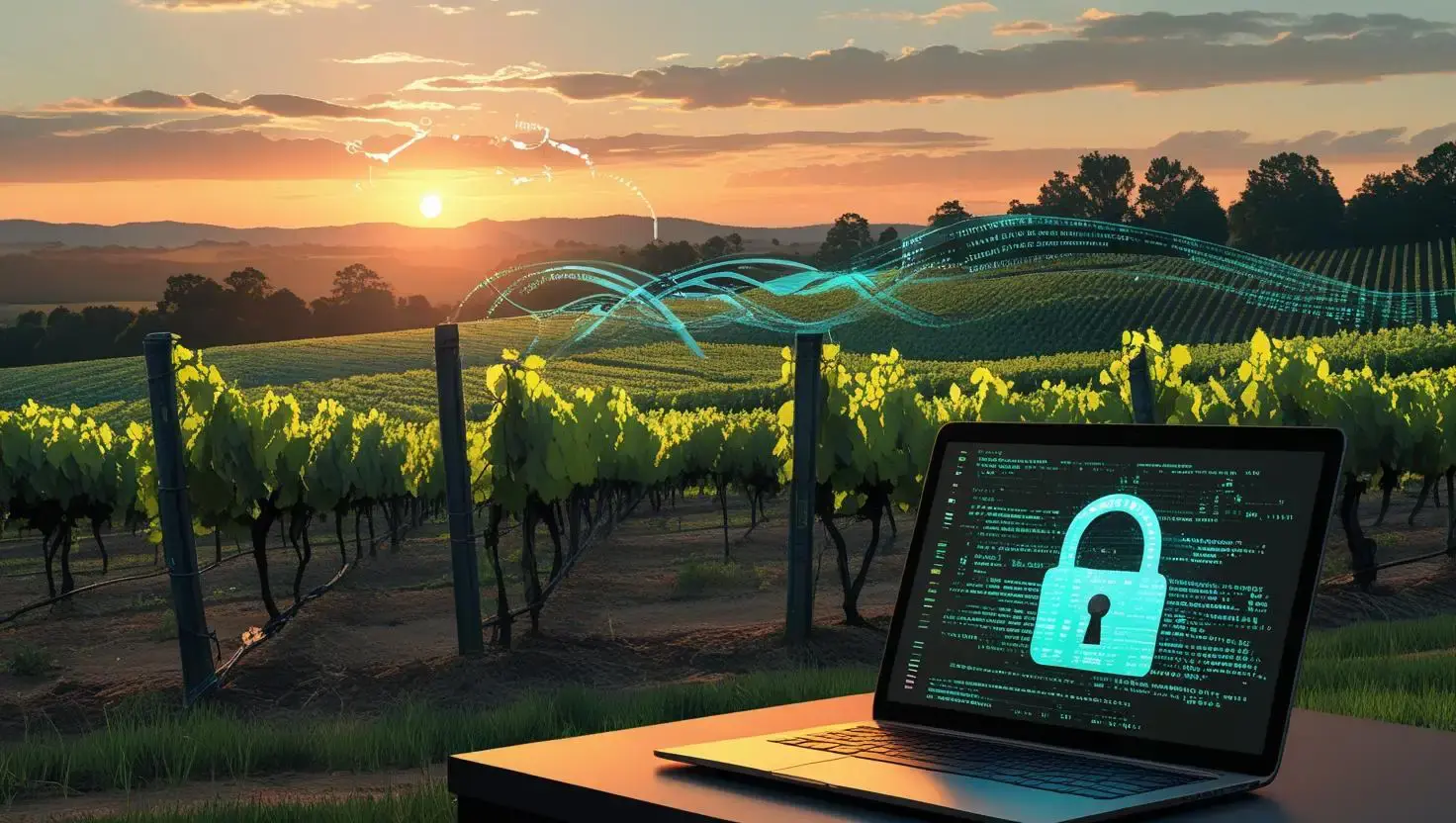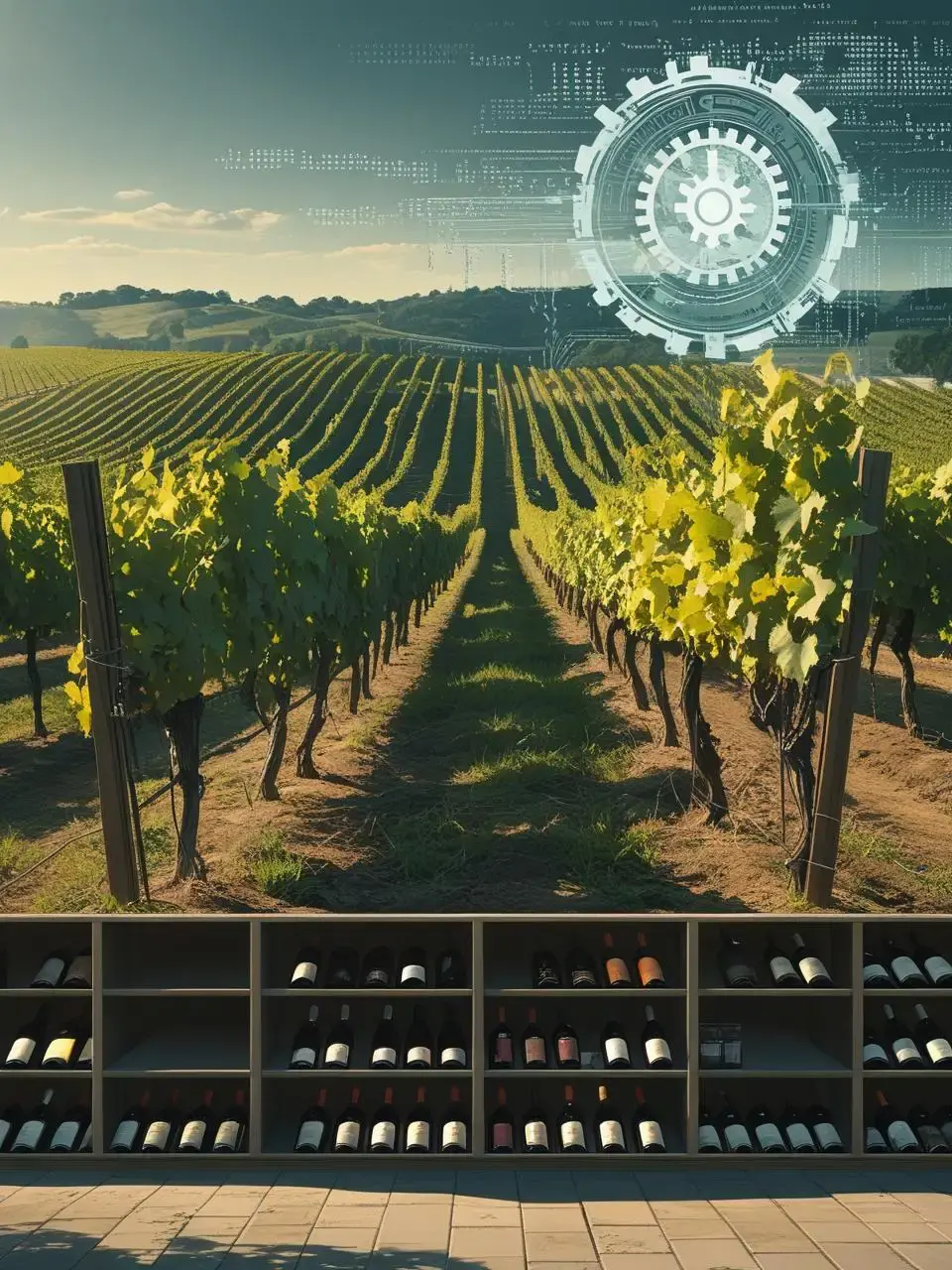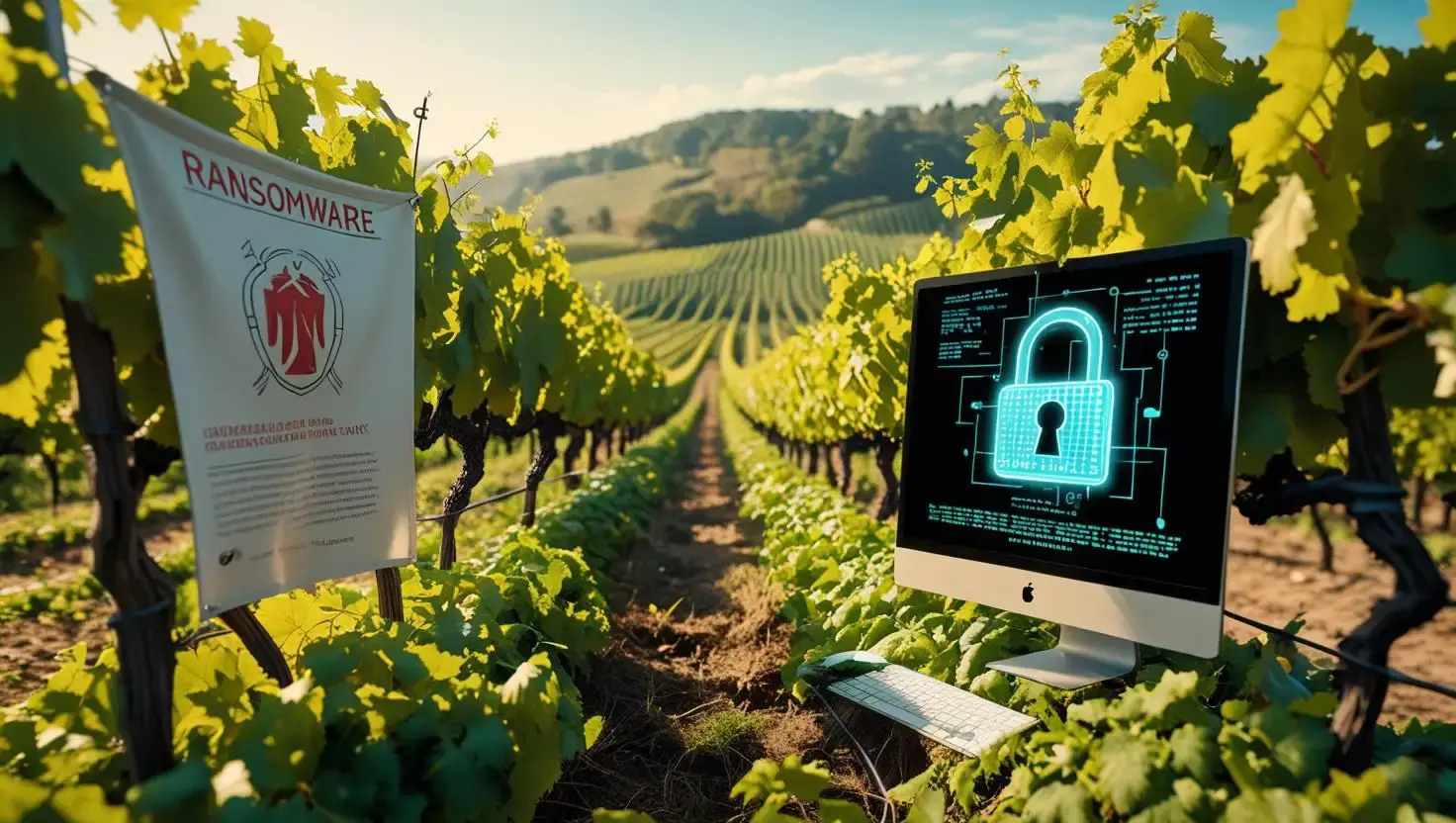
Ransomware at the Vineyard: Palm Bay International Targeted by Nitrogen Group
Vintage Under Siege – The Cyberattack That Shook Palm Bay International
In the elite corridors of wine and spirits, Palm Bay International reigns as one of America’s most influential importers. Founded in 1977 by David S. Taub and his father Martin, the company evolved from family ambition into an empire of taste—now stewarded by its third generation. From its headquarters in Port Washington, New York, Palm Bay orchestrates a sprawling distribution network across the U.S., partnering with celebrated producers such as Cavit (Italy) and Domaines Barons de Rothschild – Lafite (France).

Its scale is formidable. According to IncFact, Palm Bay generates over $500 million in annual revenue and employs 300 to 500 staff, placing it in the upper echelon of North American wine and spirits suppliers. Its influence stretches across brand development, hospitality, national retail chains, and direct relationships with vineyards and distillers around the globe.
But on July 23, 2025, the machinery of this legacy enterprise ground to a halt.
At approximately 15:12 local time, Palm Bay’s digital infrastructure was compromised in a ransomware strike by the emerging threat actor known as Nitrogen. Public evidence of the breach surfaced on ransomware.live, a threat intelligence platform widely used by cybersecurity experts. There, Nitrogen revealed samples of exfiltrated data—an unmistakable sign that the attack was both successful and deeply invasive.

Nitrogen is no ordinary ransomware group. First detected in 2024, the group rapidly gained notoriety through stealthy campaigns designed to sidestep conventional defenses. Unlike more brute-force attackers, Nitrogen deploys a modular infection chain that often begins with malvertising—fake ads promoting software tools like FileZilla or WinSCP. Victims unknowingly download ZIP or ISO bundles containing renamed executables and malicious DLLs. The malware sideloads itself through legitimate-looking apps like pythonw.exe, while background processes quietly deploy second-stage payloads such as Cobalt Strike or Sliver to establish full control.
From there, Nitrogen leverages vulnerable drivers like truesight.sys to neutralize endpoint protection and escalate privileges. Its operations are surgical: it clears logs, disables defenses, and stages stolen data for exfiltration—all before encrypting a single file.
The Palm Bay listing showed precisely that level of control. Leaked documents included:
Storage and transportation contracts
Confidential agreements with international producers
Financial statements and accounting sheets
Employee identification and payroll records
A compressed archive (tar.gz) accompanied by real screenshots marked this as a double-extortion event. It wasn’t just encryption—it was humiliation delivered in bytes. For Palm Bay, the consequences extended far beyond downtime: a curated legacy was now being carved open for public inspection.
Anatomy of a Breach – How Nitrogen Uncorked Palm Bay’s Defenses
The silence before disruption is the cruelest phase of a ransomware attack. By the time the first alert flickered across Palm Bay’s security dashboard on July 23, 2025, the damage was already done—threads of stolen data were drifting beyond the company’s grasp. How could a legacy distributor, backed by half a billion in annual revenue, fortified by contracts with international producers, fall so decisively?
To answer that, we turn to Nitrogen’s trademark infection chain—a blend of deception, modular engineering, and surgical execution.
Palm Bay likely never saw the threat coming.
Step 1: The Lure of Legitimacy
Nitrogen’s campaigns don’t begin with brute force—they start with malvertising, a tactic that uses search engine ads to promote trojanized software. For example:
An employee searching for a trusted tool like FileZilla, WinSCP, or KeePass might have clicked a malicious ad from a spoofed domain (e.g.,
ftp-winscp[.]org)That ad would lead to a zipped installer package containing what appears to be a legitimate app—but quietly carries renamed executables and a poisoned DLL (often
python312.dll)

The malware piggybacks on the reputation of well-known software, sideloading itself into processes that look clean to the casual user and even to basic endpoint defenses.
Step 2: Silent Sideloading
Once launched, the malware activates through DLL sideloading, exploiting applications like pythonw.exe to run NitrogenStager—a lightweight loader that clears the path for command-and-control tools.
These payloads often include:
Cobalt Strike or Sliver for remote control
Registry manipulation and task scheduling for persistence
Use of vulnerable drivers like
truesight.systo disable endpoint security
By the time security teams detect anomalies, Nitrogen has already mapped out infrastructure and begun staging exfiltration paths.
Step 3: Harvest, Encrypt, Humiliate
What followed at Palm Bay was characteristic of a double-extortion campaign:
Sensitive contracts, producer agreements, and financial records were extracted
Employee payroll and identity data were collected—possibly via access to shared folders or cloud-linked platforms
Encryption of critical systems likely triggered at the final stage, locking the company out while data was uploaded to staging servers
But the most chilling aspect? The calm precision. There were no messy ransom emails riddled with grammar errors. No sloppy payload behavior. Nitrogen's fingerprints suggest a crew with discipline—likely ex-affiliates of sophisticated ransomware collectives like BlackCat or ALPHV, repurposing elite tools for stealthier campaigns.
Palm Bay wasn’t chosen randomly. It was profiled, infiltrated through a door labeled as benign, and gutted before it had time to scream.
The Cost of Silence – Predicting the Financial Fallout
Palm Bay International has not publicly disclosed the financial damage caused by the July 23, 2025 ransomware attack. However, based on historical data from comparable incidents in the distribution, logistics, and manufacturing sectors, we can construct a detailed forecast. These figures are estimates, not confirmed disclosures, and reflect both direct and indirect costs associated with ransomware recovery.
Projected Financial Impact Breakdown
Category | Details | Best Case | Worst Case |
|---|---|---|---|
| Recovery and System Restoration | Includes rebuilding servers, restoring backups, replacing compromised hardware, and upgrading cybersecurity infrastructure. Often requires external contractors and forensic specialists. | $1.5M | $3M |
| Business Disruption and Downtime | Palm Bay’s supply chain and logistics likely suffered delays. Average ransomware downtime exceeds 22 days, with lost revenue from halted operations and missed deliveries. | $1M | $2.5M |
| Legal Penalties and Regulatory Fines | If employee or vendor data includes protected health or personal information, Palm Bay may face penalties under HIPAA, GDPR, and CCPA. GDPR fines can reach up to €20M or 4% of global turnover. HIPAA violations range from $141 to $2.13M per infraction. | $500K | $3M |
| Reputation Damage and Contractual Fallout | Loss of vendor trust, renegotiation of supply agreements, and long-term brand erosion. May require crisis PR, customer retention campaigns, and contract remediation. | $1M | $2M |
| Breach Response and External Support | Includes forensic investigators, legal counsel, breach notification services, insurance deductibles, and incident negotiators. Cyber insurance may only partially cover these costs. | $500K | $1.5M |
| Ransom Payment (if paid) | Nitrogen’s demands are unknown, but similar groups have requested between $5M and $10M. Payment may have been negotiated down, but still represents a major outlay. | $2M | $5M |
| Total Estimated Financial Impact | Sum of all projected costs across categories. | $6.5 million | $17 million |
These projections are based on industry benchmarks and case studies from ransomware incidents. They reflect the full spectrum of financial exposure—from technical recovery to reputational repair and legal liability.
The Shield That Could Have Held – How Cy-Napea® Might Have Prevented the Breach
 As the cybersecurity team behind Cy-Napea®, we specialize in defending precisely the kind of enterprise that fell victim to the July 23, 2025 ransomware attack. In our analysis of the breach at Palm Bay International, we identify several key inflection points where our platform—designed for high-risk, data-sensitive operations—might have intercepted, neutralized, or contained the threat.
As the cybersecurity team behind Cy-Napea®, we specialize in defending precisely the kind of enterprise that fell victim to the July 23, 2025 ransomware attack. In our analysis of the breach at Palm Bay International, we identify several key inflection points where our platform—designed for high-risk, data-sensitive operations—might have intercepted, neutralized, or contained the threat.
While no system guarantees absolute immunity, the architecture of Cy-Napea® is built to detect, prevent, and recover from ransomware campaigns like the one executed by Nitrogen.
Detection Before Disruption
The breach at Palm Bay most likely began with malvertising and trojanized software installers—a technique that Cy-Napea® was specifically designed to block:
Our Extended Detection and Response (XDR) and Endpoint Detection modules would have identified DLL sideloading techniques and halted unauthorized executions in real time
Behavioral analytics within our system recognize patterns associated with Nitrogen’s toolkit, including registry manipulation, driver-level exploits, and staging payloads like Cobalt Strike and Sliver
Vulnerability Management That Closes the Door
Nitrogen is known for exploiting outdated drivers and weak access controls. Our integrated vulnerability scanner continuously monitors for exploitable software and enforces automated patch deployment, reducing the attack surface before threats evolve.
Locked-Down Data and Segmentation Protocols
Cy-Napea® leverages file integrity monitoring, role-based access controls, and Data Loss Prevention (DLP) measures to contain sensitive information. Even if an attacker bypassed perimeter defenses:
Contractual and financial files would have been isolated behind access permissions
Detection of file exfiltration attempts would have triggered immediate lockdown
Real-Time Recovery and Resilience
Palm Bay’s downtime could have been avoided. Cy-Napea®’s disaster recovery engine is engineered for rapid rollback with minimal business disruption:
Encrypted systems can be restored using image-based backup snapshots
Recovery is possible without ransom payment through layered resilience architecture and on-prem/cloud failover systems
Legal and Regulatory Safeguards
Cy-Napea® maintains proactive compliance with major legal frameworks:
HIPAA for employee health data
Tools within Cy-Napea® automate incident documentation, breach notification workflows, and audit trail management—reducing the risk of penalties ranging from $7,500 per violation (CCPA) to €20 million under GDPR
Human-Level Vigilance Through Education
Technology alone can’t defend an enterprise—people must know how to use it. Cy-Napea® includes robust cyber hygiene training designed to educate employees about:
Malvertising risks
Phishing techniques
Safe handling of third-party software
Such training can eliminate the misstep that initiates an attack like Nitrogen’s.
Legal Disclaimer
This analysis is produced by Cy-Napea® as part of an educational and strategic review of ransomware threats in the context of publicly reported events. All predictions and scenario-based commentary are based on publicly available data and known threat intelligence at the time of publication. No inference of fault, liability, or endorsement is made regarding Palm Bay International or any external entities mentioned. This article does not constitute legal advice or contractual guidance.
Sources





